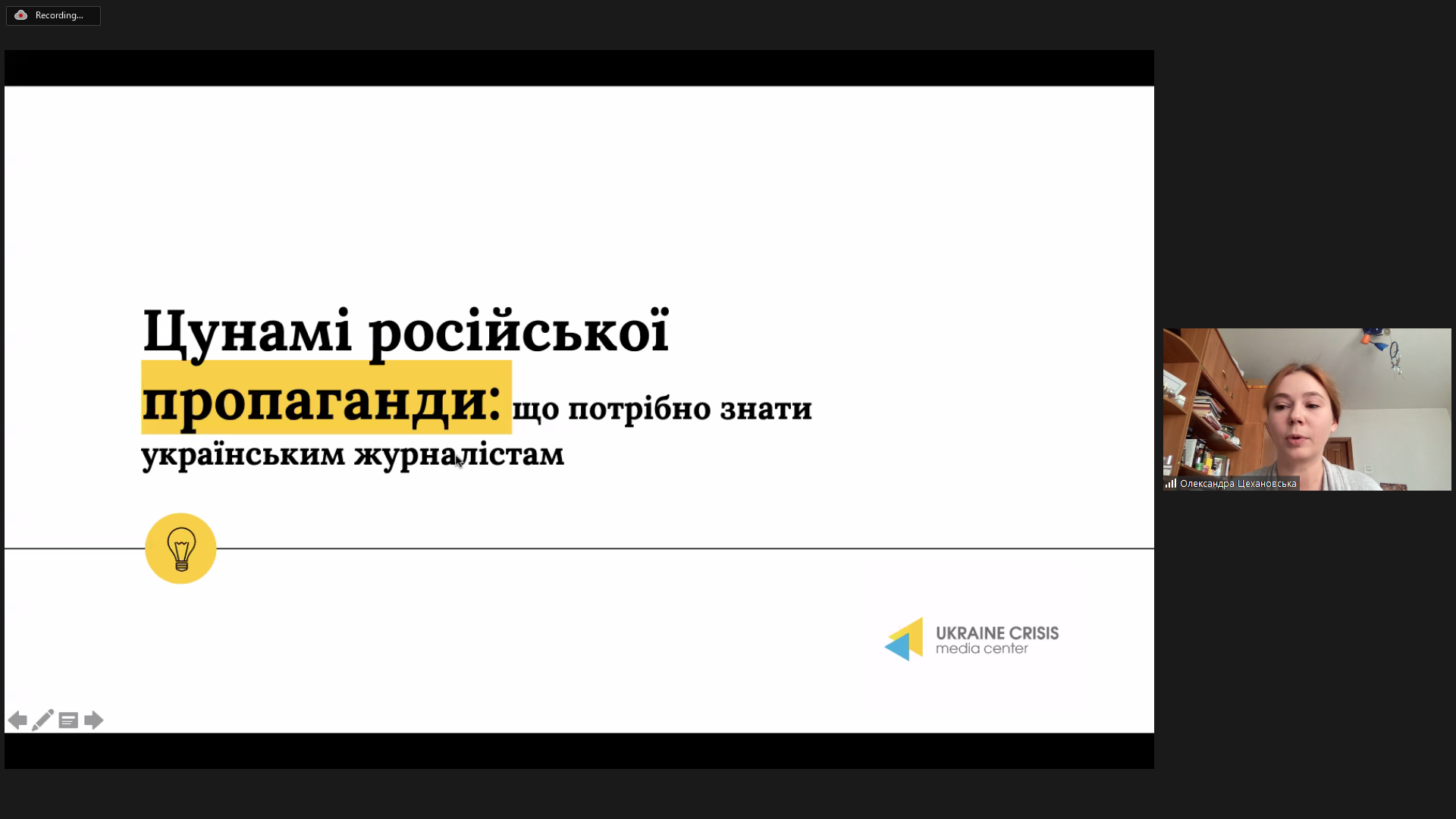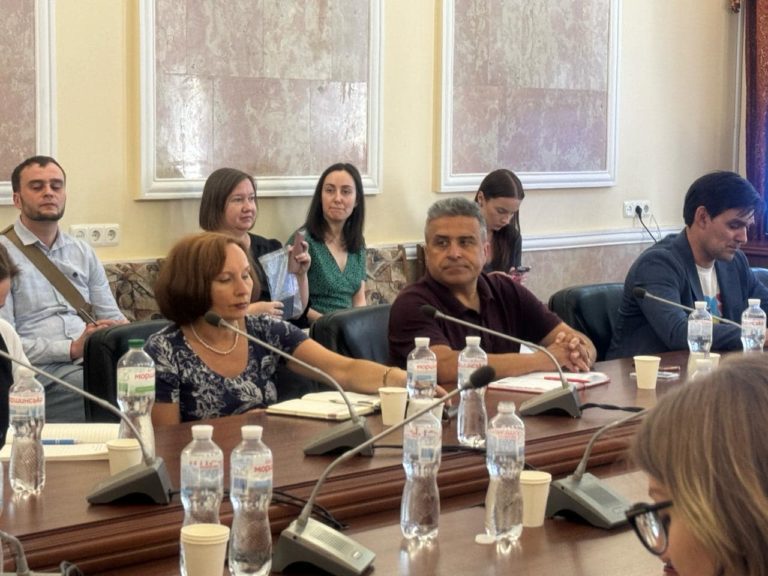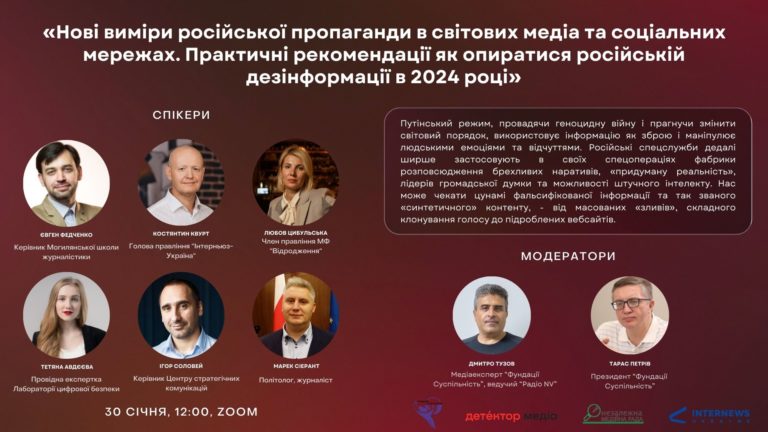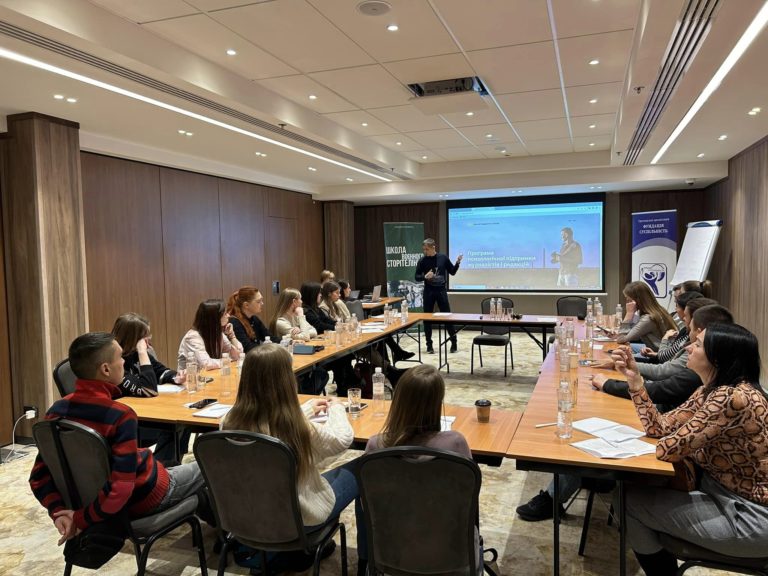Another 15 media professionals from across Ukraine – Odesa, Kostiantynivka, Kharkiv, Lviv, Lyiv, Cherkasy – leveled up their skills in fact-checking and building communications during the second session of the School of Strategic Communications and Anti-Fakes.
The training session was held online on November 17.
Valeriia Kovtun, manager of the National Media Literacy Program, spoke about communications planning, audience types, and the fundamental rules for creating messages. Dmytro Tuzov, a journalist and NV Radio host, conducted a master class in identifying fake news. And Oleksandra Tsekhanovska, Hybrid Warfare Analytical Group head at Ukrainian Crisis Media Center, told the participants how Russian media lie and, most importantly, what Ukrainian journalists should know to counter them.
You should communicate with the audience to get trust and influence and establish a dialogue. A clear plan lies at the base of communication, said Valeriia Kovtun.
To conduct high-quality communications, you should have answers to the following questions:
- What is the situation now?
- What do we want to achieve?
- Who is our target audience?
- What is our approach?
- How do we know the audience’s reaction?
- How do we trace this reaction?
- How do we measure the results?
Besides theoretical knowledge, Valeriia Kovtun presented cases of quality communications, including This girl can from the UK Department for Digital, Culture, Media and Sport and The marathon no one wants to run from Nova Poshta.
Dmytro Tuzov used the “classical” and new fake news stories in the Ukrainian information space to teach the participants to spot details in media stories and politicians’ words that could indicate deception or manipulation.
We shouldn’t forget that failure to disseminate information is also manipulation. For instance, the road accident involving MP Trukhin when the media failed to post the stories or simply removed them, the trainer noted.
During the training, Oleksandra Tsekhanovska noted that fake news is a brick that lays the foundation for a narrative* as the main element of disinformation, in particular in Russia’s hybrid war against Ukraine.
*Narrative is a story, interpretation of events that form a certain attitude towards an object.
Russia’s main narratives about Ukraine have not changed since 2014: Ukraine is the West’s puppet, it is a failed state, Ukraine has severe Russophobia, fascism is flourishing, and there is a civil war in Donbas. However, if we dig deeper, we understand that it had taken years to shape these narratives. It is not enough to debunk disinformation, it is important to prevent its dissemination, noted Tsekhanovska.
The trainer also spoke about the main disinformation export channels (local agents of influence, media, and ad hoc actors) and the algorithms used, which is important in the light of countering Russian propaganda.
The training session was organized by Souspilnist Foundation with the support of Detector Media, Internews Ukraine and the Independent Media Council.




